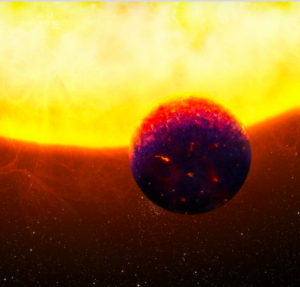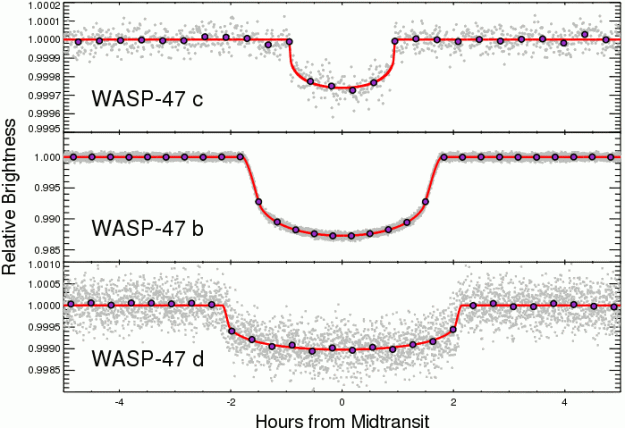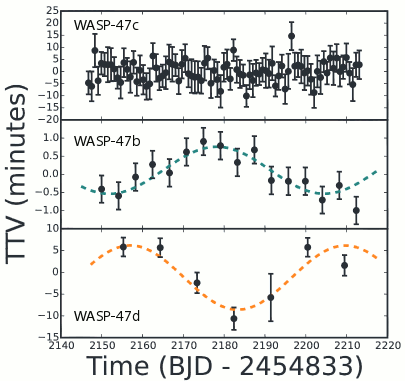The Universities of Cambridge and Zurich have put out a press release about a study led by Caroline Dorn. The work discusses how planets form out of proto-planetary discs, and proposes that some planets would form at high temperatures out of condensates rich in Calcium and Aluminium. Their cores could thus effectively be giant rubies or sapphires (different forms of aluminium oxide).

Planets forming at different distances from their star will form at different temperatures, where different minerals will condense out.
Dorn et al suggest that the three planets HD219134 b, 55 Cancri e and WASP-47 e likely to be such objects. “In our calculations we found that these planets have 10-20% lower densities than the Earth”, says Caroline Dorn. The authors suggest that this is because they are rich in Calcium and Aluminium whereas other rocky planets have Iron-rich cores.

A depiction of 55 Cnc e (credit: Thibaut Roger)
“So, we have found three candidates that belong to a new class of super-Earths with this exotic composition,” says Dorn, adding that: “What is exciting is that these objects are completely different from the majority of Earth-like planets, if they actually exist.”
Take up of the press release has included the International Business Times, India Today, Popular Science, First Post, Sputnik News, ZME Science and other websites.







